List of rulers of Provence
The land of Provence has a history quite separate from that of any of the larger nations of Europe. Its independent existence has its origins in the frontier nature of the dukedom in Merovingian Gaul. In this position, influenced and affected by several different cultures on different sides, the Provençals maintained a unity which was reinforced when it was created a separate kingdom in the Carolingian decline of the later ninth century. Provence was eventually joined to the other Burgundian kingdom, but it remained ruled by its own powerful, and largely independent, counts.
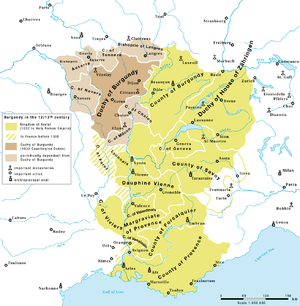
In the eleventh century, Provence became disputed between the traditional line and the counts of Toulouse, who claimed the title of "Margrave of Provence". In the High Middle Ages, the title of Count of Provence belonged to local families of Frankish origin, to the House of Barcelona, to the House of Anjou and to a cadet branch of the House of Valois. After 1032, the county was part of the Holy Roman Empire. It was inherited by King Louis XI of France in 1481, and definitively incorporated into the French royal domain by his son Charles VIII in 1484.
Merovingian dukes and patricians
During the period of the Merovingian dynasty in Gaul, Provence was a province ruled by duces (dukes), military leaders and district commanders who served as defenders of the frontiers of the kingdom and ruled over vast territories as opposed to the comites (counts), who ruled the cities and their environs. Provence was usually a part of the division of the Frankish realm known as the Kingdom of Burgundy, which was treated as its own kingdom. Their title sometimes appears as rector Provinciae.
This is an incomplete list of the known Merovingian-appointed dukes of Provence.
- Gondulf (fl. c. 491)
- Liberius (until 534), Ostrogothic appointee
- Namatius (bef. 552), Frankish appointee
- Bodegisel (fl. c. 566)
- Adovarius (561–569)
- Lupus (569–570)
- Jovin (570–573)
- Albin (573–575)
- Dinamius (from 575)
- Leudegisel (fl. c. 585), of Burgundian Provence
- Nicetas (from 587)
- Babo (fl. c. 600)
- Aegyla (fl. c. 602)
- Bado (634–641)
- Willibad (641–643), of Burgundian Provence
- Hector (fl. c. 679)
- Nemfidius (fl. c. 700)
- Antenor (fl. c. 697)
- Metrannus (fl. c. 700)
- Maurontus (c. 720 – 739)
- Abbo (fl. c. 739)
Carolingian dukes and margraves
Provence was ruled by a poorly known series of dukes during the period of general Carolingian unity until the Treaty of Verdun (843).
Carolingian kings
After the division of the Carolingian Empire by the Treaty of Verdun (843), the first of the fraternal rulers of the three kingdoms to die was Lothair I, who divided his middle kingdom in accordance with the custom of the Franks between his three sons. Out of this division came the Kingdom of Provence, given to Lothair's youngest son, Charles. A heritage of royal rule was thus inaugurated in Provence that, though it was often subsumed into one of its larger neighbouring kingdoms, it was just as often proclaiming its own sovereigns.
The kingdom of Provence was also known as Lower Burgundy (or Cisjurane Burgundy). Its capital was first Vienne then Arles and it is therefore sometimes known as Arelate.
- Charles (855–863)
- Provence divided between surviving brothers, Lothair II and the Emperor Louis II. The bulk goes to Louis.
- Louis II (863–875), also Holy Roman Emperor from 855
- As with his Kingdom of Italy, Louis's Provence goes to his uncle on his death.
- Charles the Bald (875–877), also Holy Roman Emperor from 875
- Louis the Stammerer (877–879)
- With the death of Louis, Charles' successor, Provence refused to elect his two sons and instead elected one of their own as king. Boso married Ermengard, daughter of Louis II, to strengthen his and his son's claim.
- Boso (879–887)
- Louis the Blind (887–928), also Holy Roman Emperor from 901 to 905
- Louis's kingdom did not pass to his heirs, but instead to his brother-in-law, the husband of his sister, Hugh, who had acted as his regent since 905. Hugh never used the royal title in Provence.
- Hugh (911–933)
- In 933, Provence ceases to be a separate kingdom as Hugh exchanged it with Rudolph II of Upper Burgundy for the Iron Crown of Lombardy, that is, rule of Italy.
Counts and Margraves, within the Empire
In the aftermath of the death of Louis the Blind that Provence began to be ruled by local counts placed under the authority of a margrave. Firstly, Hugh of Arles served as duke and regent during Louis' long blindness. Secondly, Hugh gave the march of Vienne and duchy of Provence to Rudolf II of Burgundy in a treaty of 933. Rudolf was never recognised by the nobles of the country and appointed Hugh, Duke of Burgundy, its first margrave.
At the time, the premier counts in the region were the counts of Arles and those of Avignon. Those who would first bear the title comes Provinciae or "count of Provence" descended from one Rotbold of Arles. William I and Rotbold I did not divide their father's domains and this indivisibility was maintained by their respective descendants. It is thus impossible to ascertain who succeeded whom in the county as various reigns overlap.
By his marriage to Emma of Provence, daughter of Rotbold II, William III, Count of Toulouse inherited lands and castles in Provence. Emma inherited the title Margrave of Provence on her elder brother's death in 1037. Her son Pons by William III did not survive her, but her grandson did and claimed her title in opposition to the younger line of counts of Provence.
Bosonid dynasty
| Name | Born | Reign | Consort | Death | Notes | |
|---|---|---|---|---|---|---|
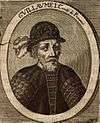 |
William I the Liberator | c.950 Son of Boson II of Arles and Constance of Vienne |
961–975 | Arsenda of Comminges no children Adelaide-Blanche of Anjou c.984 four children |
After 29 August 993 | First counts of Provence and brothers, ruled together until 975, when William took the margravial title. and Rotbold took the same title in 993, after William abdication. |
| 975–993 | ||||||
| Rotbold I | Son of Boson II of Arles and Constance of Vienne | 961–993 | Emilde two children |
1008 | ||
| 993–1008 | ||||||
| Regency of Adelaide-Blanche of Anjou:993–999 | ||||||
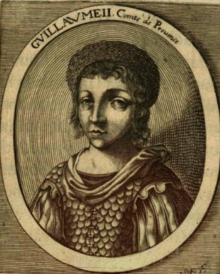 |
William II the Pious | c.980 Son of William I and Adelaide-Blanche of Anjou |
999–1019 | Gerberga of Burgundy c.984 four children |
4 March 1019 | Fell under control of his uncle Rotbold until his death in 1008. |
| Rotbold II | c.980 Son of Rotbold I and Emilde |
1008–1014 | Ermengarde of Burgundy before 1002 three children |
1014 | ||
| William III | Son of Rotbold II and Ermengarde of Burgundy | 1014–1037 | Lucie before 1002 three children |
1037 | ||
| William IV | c.980 Son of William II and Gerberga of Burgundy |
1019–1030 | Unmarried | 1030 | ||
| Fulk Bertrand | c.1000 Son of William II and Gerberga of Burgundy |
1030–1051 | Hildegard two children |
27 April 1051 | Brothers, ruled jointly after their elder brother's death. | |
 |
Geoffrey I | c.1000 Son of William II and Gerberga of Burgundy |
1030–1062 | Etienette four children |
February 1062 | |
After William III's death with no descendants, the line of counts became the sovereign line in Provence, but not uncontested. In fact, through Emma of Provence, who inherited her brother William III's margravial title, her descendants, the counts of Toulouse, claimed Provence for themselves using the title Margrave of Provence, in spite of never having ruled there.
| ||||||
| William Bertrand I | c.1040 Son of Fulk Bertrand and Hildegard |
1062–1094 | Theresa of Aragon no children Adelaide of Cavenez one child |
28 July 1094 | Co-ruled as brothers and cousins. | |
| Geoffrey II | c.1040 Son of Fulk Bertrand and Hildegard |
1062–1067 | Ermengard no children |
28 July 1094 | ||
 |
William Bertrand II | c.1050 Son of Geoffrey I and Etienette |
1063–1093 | Matilda one child |
28 July 1094 | |
 |
Gerberga | 1045/65 Daughter of Geoffrey I and Etienette |
1094–1112 | Gilbert I of Gévaudan 1073 two children |
28 July 1094 | Considered a wise ruler.[1] She abdicated in 1112 to her eldest daughter, soon after her marriage to the count of Barcelona. |
House of Gévaudan
| Name | Born | Reign | Consort | Death | Notes | |
|---|---|---|---|---|---|---|
| Douce I | c.1090 Daughter of Gilbert I of Gévaudan and Gerberga |
1112–1127 | Ramon Berenguer III of Barcelona 3 February 1112 Arles five children |
1127 | Ruled together with her husband, the Catalan Ramon Berenguer III of Barcelona. |
Houses of Barcelona (comital) and Toulouse (margravial)
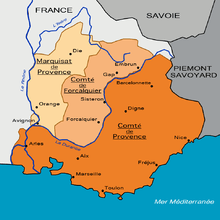
With a lack of interest in the Reconquista on their southern frontier, the Catalans turned towards their origins, the Mediterranean littoral and northwards. They coveted the region between the Cévennes and the Rhône, then under the control of Toulouse. In 1112, the count of Barcelona, Ramon Berenguer III, married the heiress of Provence, Douce, who was the daughter of the Countess Gerberga of Provence, Gévaudan, Carladais, and part of Rodez. The marriage was probably taken at the urging of the church, which was then in conflict with house of Toulouse. In 1076, Count Raymond IV was excommunicated, but he still lent his support to Aicard, the deposed archbishop of Arles (since 1080). With the count away on the First Crusade, the church took the opportunity to seize the balance of power in the region. This marriage effectively put Provence under Catalan control.
To accommodate the longstanding claims of the count of Toulouse, in 1125, Raymond's heir, Alfonso Jordan, signed a treaty whereby his family's traditional claim to the title of "Margrave of Provence" was recognised and the march of Provence was defined as the region north of the lower Durance and on the right of the Rhône, including the castles of Beaucaire, Vallabrègues, and Argence. The region between the Durance, the Rhône, the Alps, and the sea was that of the county and belonged to the house of Barcelona. Avignon, Pont de Sorgues, Caumont and Le Thor remained undivided.
Internally, Provence was racked by uncertainties over rights of succession. Douce and Ramon Berenguer signed all charters jointly until her death in 1127, after which he alone appears as count in all charters until his death in 1131. At that time, Douce's younger sister, Stephanie was married to Raymond of Baux, who promptly laid claim to the inheritance of her mother, even though Provence had peacefully passed into the hands of her nephew, Berenguer Ramon I.
| Name | Born | Reign | Consort | Death | Notes | |
|---|---|---|---|---|---|---|
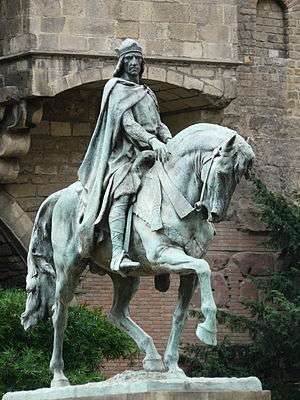 |
Ramon Berenguer I the Great | 11 November 1082 Rodez Son of Count Ramon Berenguer II of Barcelona and Gerberga |
1112–1131 | María Rodríguez de Vivar c.1103 two children Almodis de Mortain c.1106 no children Douce I 3 February 1112 Arles five children |
29 January/13 July 1131 Barcelona aged 48 |
Also Count of Barcelona. Ruled together with his wife, Douce I, Countess of Provence. His reign saw a proliferation of Provençal culture in Catalonia. |
.jpg) |
Alfonso Jordan | 1103 Tripoli Son of Count Raymond IV of Toulouse and Elvira of Castile |
1125–1148 | Faydite d'Uzès c.1125 four children |
16 August 1148 Caesarea aged 44–45 |
Also Count of Toulouse. Obtained half of Provence by the division agreement of 1125. |
 |
Berenguer Ramon I | February 1114 Son of Ramon Berenguer I and Douce I |
1131–1144 | Beatrice of Melgueil c.1135 one child |
March 1144 Melgueil aged 30 |
Younger son of the previous. Took and offensive against Genoa. |
| Regency of Count Ramon Berenguer IV of Barcelona:1144–1157 | ||||||
| Ramon Berenguer II | c.1135 Son of Berenguer Ramon I and Beatrice of Melgueil |
1157–1166 | Richeza of Poland 17 November 1161 one child |
March 1166 Nice aged 30–31 |
In August 1161, he travelled to Turin with his uncle to obtain confirmation of his countship in Provence from the Emperor Frederick I, for Provence was legally a fief of the Holy Roman Empire. | |
| Raymond I | 1134 Tripoli Son of Alfonso Jordan and Faydite d'Uzès |
1148–1194 | Constance of France c.1154 (annulled 1166) five children |
December 1194 Nîmes aged 59–60 |
Also Count of Toulouse as Raymond V. | |
| Douce II | c.1162 Daughter of Ramon Berenguer II and Richeza of Poland |
1166 | Unmarried | 1172 Nice aged 9–10 |
She ruled a few months, as her half brother-in-law, Alfonso II of Aragon, claimed Provence for himself on the basis of the imperial enfeoffment of 1162. | |
 |
Alfonso I the Chaste | 1/25 March 1157 Huesca Son of Count Ramon Berenguer IV of Barcelona and Petronilla of Aragon |
1166–1173 | Sancha of Castile 18 January 1174 Zaragoza nine children |
25 April 1196 Perpignan aged 39 |
Also King of Aragon and Count of Barcelona. In August 1161, he had travelled to Turin with his uncle obtain the confirmation of his countship in Provence from the Emperor Frederick I, for Provence was legally a fief of the Holy Roman Empire. In 1173 gave the County to his younger brother Ramon Berenguer. However, kept the title until his death in 1196. |
| Ramon Berenguer III | c.1158 Son of Count Ramon Berenguer IV of Barcelona and Petronilla of Aragon |
1173–1181 | Unmarried | 5 April 1181 Montpellier aged 22–23 |
In 1176, he joined his brother Sancho in conquering Nice from Genoa. He was assassinated. | |
.jpg) |
Sancho | c.1161 Son of Count Ramon Berenguer IV of Barcelona and Petronilla of Aragon |
1181–1185 | 1223 Montpellier aged 61–62 |
in 1184, Sancho signed a treaty of alliance with the count of Forcalquier, the count of Toulouse and the Republic of Genoa agreeing to oppose the king of Aragon's efforts to dominate Genoa and to take the city of Marseille from him. Abdicated in 1185. | |
 |
Alfonso II | 1180 Barcelona Son of Alfonso I and Sancha of Castile |
1185–1209 | Garsenda, Countess of Forcalquier July 1193 Aix-en-Provence one child |
2 February 1209 Palermo aged 28–29 |
His reign was marked by his conflicts with the count of Forcalquier, to whose granddaughter he was married. |
| Raymond II | 27 October 1156 Saint-Gilles, Gard Son of Raymond I and Constance of France |
1194–1222 | Ermessende of Pelet 1172 no children Beatrice of Béziers after 1176 (annulled 1189) one child Joan of England October 1196 Rouen two children A daughter of Isaac Komnenos of Cyprus c.1200 (annulled 1202) no children Eleanor of Aragon January 1204 Perpignan no children |
1 August 1222 Toulouse aged 65 |
Also Count of Toulouse as Raymond VI. Alled with the Cathars, like many of the neighbouring Languedoc states, his domains in Toulouse were challenged by the Albigensian Crusade between 1215 and 1218. | |
| Regency of Garsenda, Countess of Forcalquier:1209–1220 | ||||||
| Ramon Berenguer IV | 1198 Son of Alfonso II and Garsenda, Countess of Forcalquier |
1220–1245 | Beatrice of Savoy 5 June 1219 Aix-en-Provence six children |
19 August 1245 Aix-en-Provence aged 46–47 |
Supporter of the Provençal lyric and culture and the Albigensian Crusade. He also helped his father-in-law in his conflict with Turin and Guigues VI of Viennois. His surviving four daughters all married kings, causing a dispute about his succession. | |
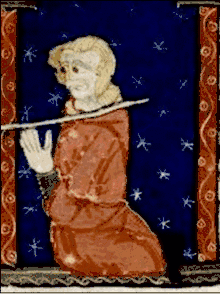 |
Raymond III | July 1197 Beaucaire, Gard Son of Raymond II and Joan of England |
1222–1249 | Sancha of Aragon March 1211 (annulled 1241) one child Margaret of Lusignan 1243 (annulled 1245) no children |
27 September 1249 Toulouse aged 52 |
Also Count of Toulouse as Raymond VII. Took Carcassonne with Count Roger-Bernard III of Foix, in the Albigensian Crusade. |
 |
Beatrice | 1229 Daughter of Ramon Berenguer IV and Beatrice of Savoy |
1245–1267 | Charles I of Sicily 31 January 1246 Aix-en-Provence seven children |
23 September 1267 Nocera Inferiore aged 37–38 |
Her inheritance caused tense relations with her sisters; Her husband installed his French court in Provence and, after her death, inherited the County. |
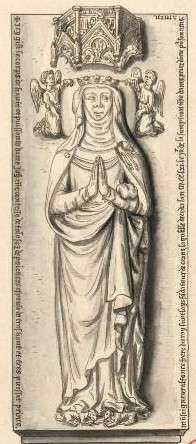 |
Joanna | c.1220 Toulouse Son of Raymond III and Sancha of Aragon |
1249–1271 | Alphonse of France c.1237 Toulouse no children |
25 August 1271 Siena aged 50–51 |
The war between Louis VIII of France and Languedoc region ended with the Treaty of Meaux (1229), determining the wedding of Joan, the heiress of Toulouse, with Alphonse, prince of France. The lack of descendance of the couple determined the annexation of the County of Toulouse, the Duchy of Narbonne, and the Margraviate of Provence to the Crown of France after their deaths. |
Capetian Angevin dynasty
- 1246–1285 Charles I, Count of Anjou, Maine, Provence and Forcalquier (1246), King of Naples, Sicily (1266) and Jerusalem (1277).
- 1285–1309 Charles II of Naples the Lame, King of Naples and (nominal) Jerusalem and Sicily, son of Charles I
- 1309–1343 Robert of Naples the Wise, Duke of Calabria (1296–1309), King of Naples and (nominal) Jerusalem and Sicily (1309), son of Charles II
- 1343–1382 Joan I of Naples, Queen of Naples and (nominal) Jerusalem and Sicily (1343–1381)
- 1349–1362 Louis I of Naples, King of Naples and (nominal) Jerusalem and Sicily, as husband of Joan I of Naples
- Queen Joan died heirless, leaving the county to Louis I of Anjou, son of King John II of France the Good, of the House of Valois, and great-great-grandson of Charles II of Naples.
Valois-Anjou dynasty
- 1382–1384 Louis I of Anjou, Count and then Duke of Anjou (1351), Duke of Calabria and Count of Maine (1356), Duke of Touraine (1370), nominal King of Sicily (1382)
- 1384–1417 Louis II of Anjou, Duke of Anjou, Calabria and Touraine, Count of Maine, nominal King of Sicily (1384), Count of Guise (1404), son of Louis I
- 1417–1434 Louis III of Anjou, Duke of Anjou and Touraine, nominal King of Sicily (1417), Duke of Calabria (1424), son of Louis II
- 1434–1480 René I of Naples the Good, Count of Guise (1417–1422), Duke of Lorraine and Bar (1431), King of Naples and (nominal) Sicily and Jerusalem (1434–1442), Duke of Anjou and Touraine (1434), King of Aragon and Count of Barcelona (in dispute, 1466–1472), son of Louis II
- 1480–1481 Charles III (V of Maine), also known as Charles of Maine, Count of Maine and Guise (1472), nephew of René I
Upon his death the heirless Charles du Maine bequeathed the counties of Provence-Forcalquier to King Louis XI of France. From this point, the title of Count of Provence becomes simply one of the many hereditary titles of the French monarchy. The only time the title was used independently following this time was by the future Louis XVIII of France, who was known as the Comte de Provence until the death of his nephew Louis XVII in 1795, when he claimed the French throne.
Governors and grand seneschals, within France
Governors
- 1481–1483 Palamède de Forbin
- 1491–1493 François de Luxembourg
Grand seneschals
- 1480–1481 Pierre de La Jaille (see Château_de_Ranton)
- 1482–1483 Raymond de Glandevès-Faucon
- 1483 Palamède de Forbin
- 1485–1493 Aymar de Poitiers, Count of Valentinois
Governors – grand seneschals
- 1493–1503 Philip of Hachberg-Sausenberg, margrave de Hochberg
- 1504–1513 Louis d'Orléans, Count of Longueville
- 1514 Jean de Poitiers, lord of Saint-Vallier
- 1515–1525 René of Savoy, Count of Tende
- 1525–1566 Claude de Savoie, Count of Tende
- 1566–1572 Honoré de Savoie, Count of Tende
Grand seneschals
- 1572–1582 Jean V de Pontevès, Count of Carcès
- 1582–1610 Gaspard de Pontevès, Count of Carcès
- 1610–1655 Jean de Pontevès, Count of Carcès
- 1655–1662 François de Simiane-Gordes
Governors
- 1572–1573 Gaspard de Saulx-Tavannes
- 1573–1578 Albert de Gondi, comte de Retz
- 1578–1579 François de La Baume, comte de Suze
- 1579–1586 Henri d'Angoulême, called, Henri, bâtard de Valois
- 1586–1594 Jean-Louis de Nogaret, duc d'Épernon
- 1592–1594 Gaspard de Pontevès, comte de Carcès
- 1594–1631 Charles de Lorraine, duc de Guise
- 1631–1637 Nicolas de L'Hôpital, marquis de Vitry
- 1637–1653 Louis-Emmanuel de Valois, comte d'Alais
- 1653–1669 Louis de Bourbon-Vendôme, duc de Mercœur
- 1669–1712 Louis-Joseph de Bourbon, duc de Vendôme
- 1712–1734 Claude-Louis-Hector, duc de Villars
- 1734–1770 Honoré-Armand, duc de Villars
- 1770–1780 Camille-Louis de Lorraine
- 1780–1790 Charles-Just de Beauvau
In 1790, the French Revolution definitively ended the governorship.
See also
References
- Clement, Francois. L' Art De Vérifier Les Dates Des Faits Historiques, Des Chartes, Des Chroniques, Et Autres Anciens Monumens, Depuis La Naissance De Notre-Seigneur, p. 436 (Jombert, 1784).